Consumers' attitude and behavior
Part 1 : Trends in consumer issues and consumers' attitude/behavior
Chapter 2 : Consumer-related socioeconomic situation and consumers' attitude/behavior
Section 2 : Consumers' attitude and behavior
Among answers to "How do you spend money?", the percentage of "eating" was the largest. Other than eating, answers include "fashion," etc. for young people, and "medical care" for the elderly.
- Among the things people are currently spending money on, the percentage of "eating" was the largest regardless of age.
- In the late 10s, 20s and 30s, people spend money on "fashion" and "beauty/how to dress appropriately," but also on "savings."
- For those in their 30s and 40s, there is a high percentage for "education (children's education)."
- For those aged 60 years & over, the percentage for "medical care" increased, and money is also spent on "travel" and "social activities."
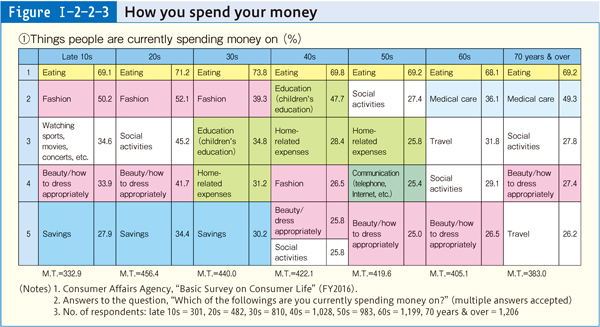
For those who are less than 60 years old, people want to put money into "savings" and the areas in which they want to save money on are "fashion" and "communications."
- Regarding what to spend money on, "savings" was mentioned in a wide range of ages from the late 10s to 50s. Even in the 30s and 40s, concerns for the future was indicated with responses such as "preparation for post-retirement."
- Regarding what to save money on, the percentage of respondents who answered "cars" was high across all generations. There is a trend of not purchasing cars not only for young consumers but also for middle-aged and elderly consumers.
- Consumers in their late 10s intend to save money on "eating" and "communications (telephone, Internet, etc.)," and those in their 30s to 60s intend to save money on "fashion" and "communications (telephone, Internet, etc.)."
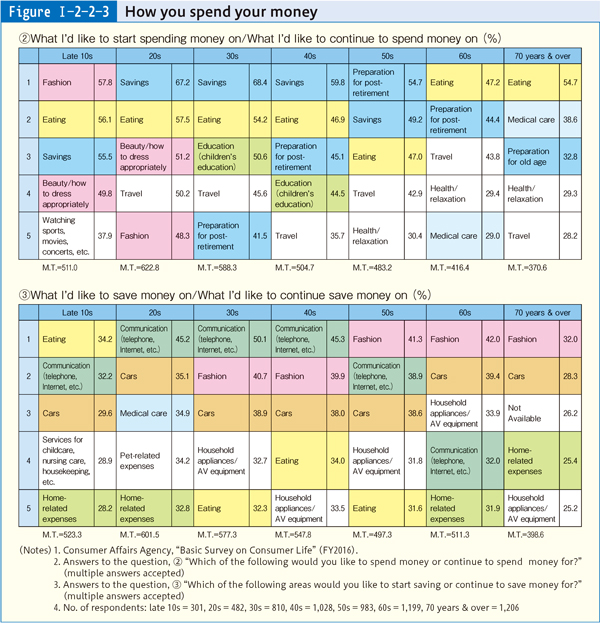
To gather information on avoiding consumer problems, consumers under 40 years use the Internet.
- The information sources consumers look for to avoid consumer problems varies by age.
- "Television" is high among all ages, especially for those in their 50s & over, which exceeds 70%.
- From the late 10s to the 30s, the "Internet (including SNS)" was the highest exceeding 60%. However, it was less than 20% for those in their 60s & over.
- In the late 10s, "School classes" exceeded 40%.
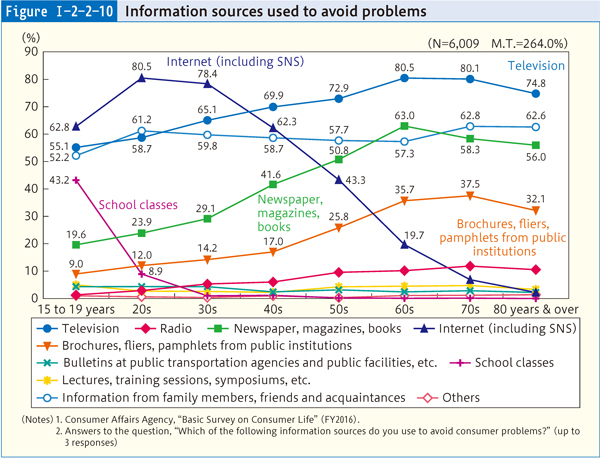
Consultations related to the Kumamoto earthquake are mostly on housing.
- The number of consultations related to the Kumamoto earthquake exceeded 1,000 in the month following the earthquake (May 2016), but then decreased to 126 in December 2016.
- As for the content of consultations for people who lived in Kumamoto Prefecture, about 60-70% consisted of housing-related matters such as "real-estate leases" and "work and construction."
- As for the consultations for people who did not live in Kumamoto Prefecture, consultations included many travel-related matters such as "domestic package tours" and "arranged trips," but in May and June, there were more consultations related to "donation."
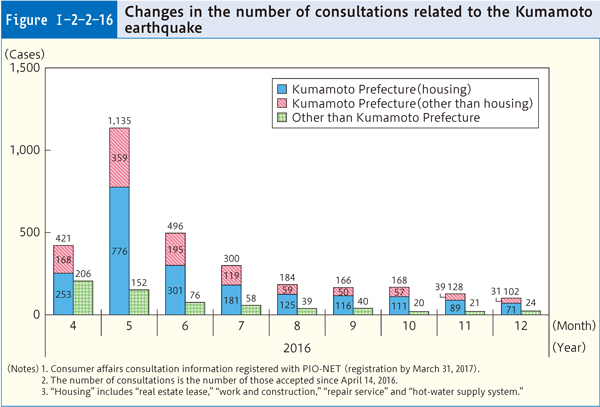
Direct disposal and leftovers are major factors of food loss due to consumer households.
- When asked what comes to mind as the biggest factor for food loss by consumer households in everyday life, 26.7% of respondents answered "direct disposal" and 23.7% answered "leftovers." The above two account for about 50%. Conversely, 36.8% said "Nothing comes to mind (I have not caused food loss before)."
- Regarding the meanings of "freshness date" and "expiration date," 64.9% answered "I know." Meanwhile, when asked what they take into consideration when shopping, 27.3% answered "The date to eat."
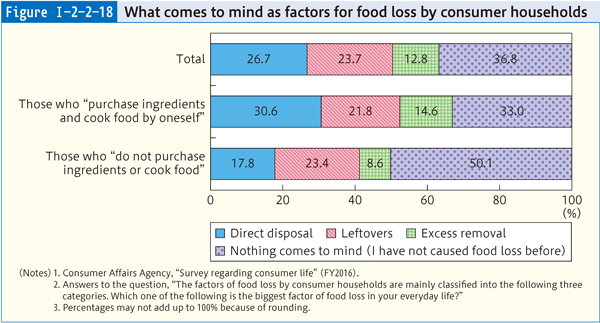
- "Direct disposal" means the discarding of food as it is, without being used or provided as an ingredient for cooking or food products because of being past the freshness date, etc.
- "Leftovers" means the discarded food without being eaten though being used or provided.
- "Excess removal" means the discarding of eatable parts of food exceedingly at the time of removal for uneatable parts, such as when peeling the skin from a radish.


